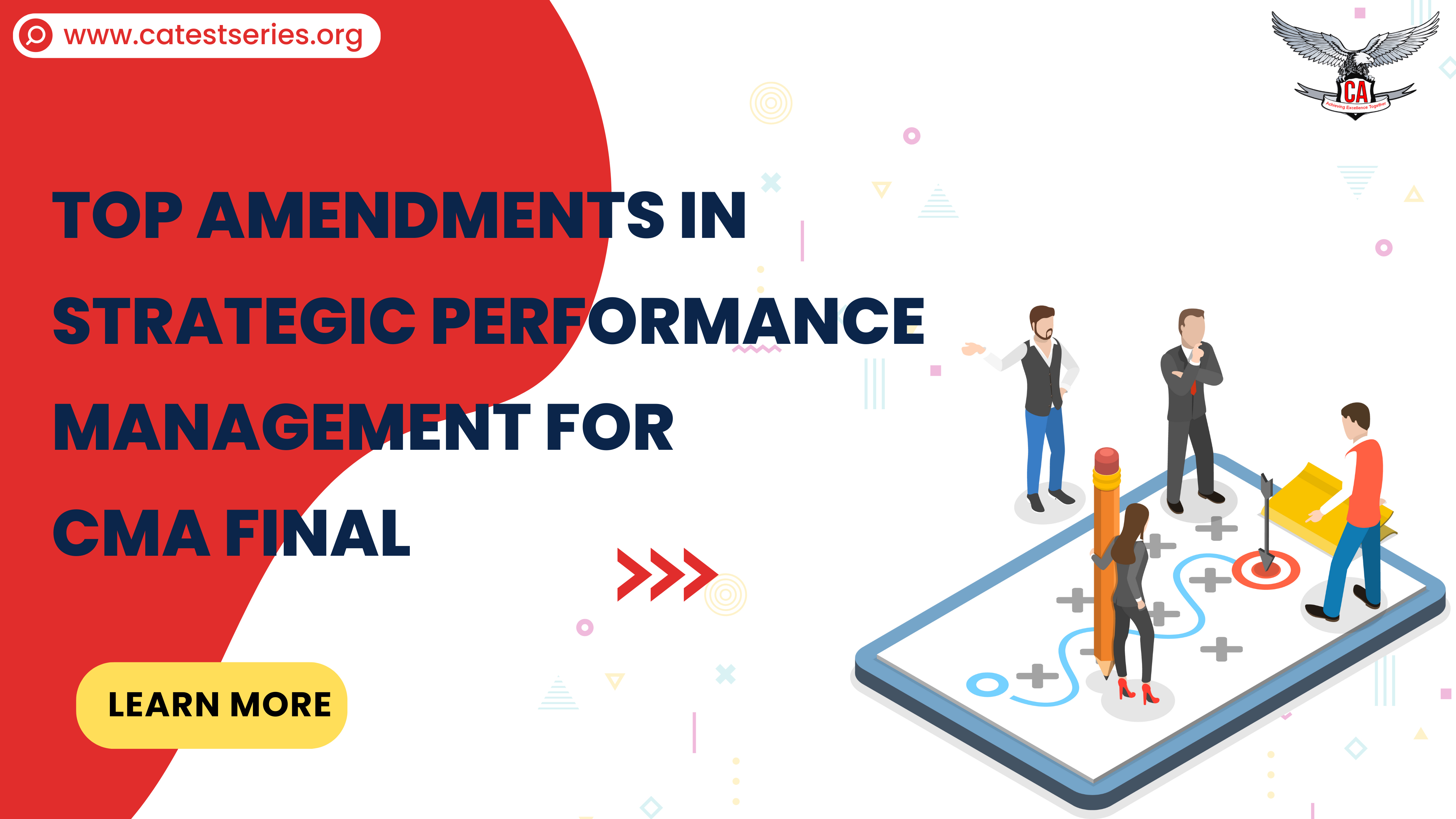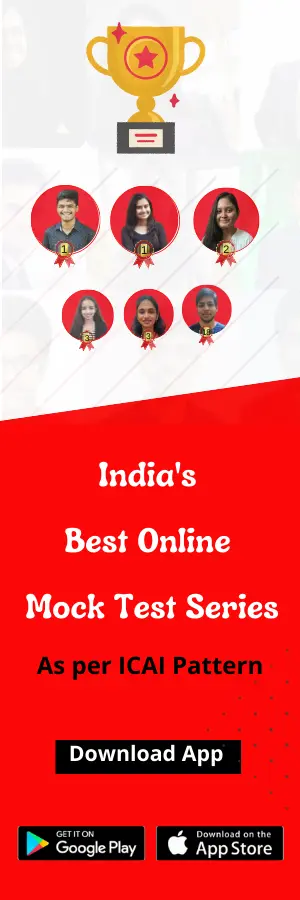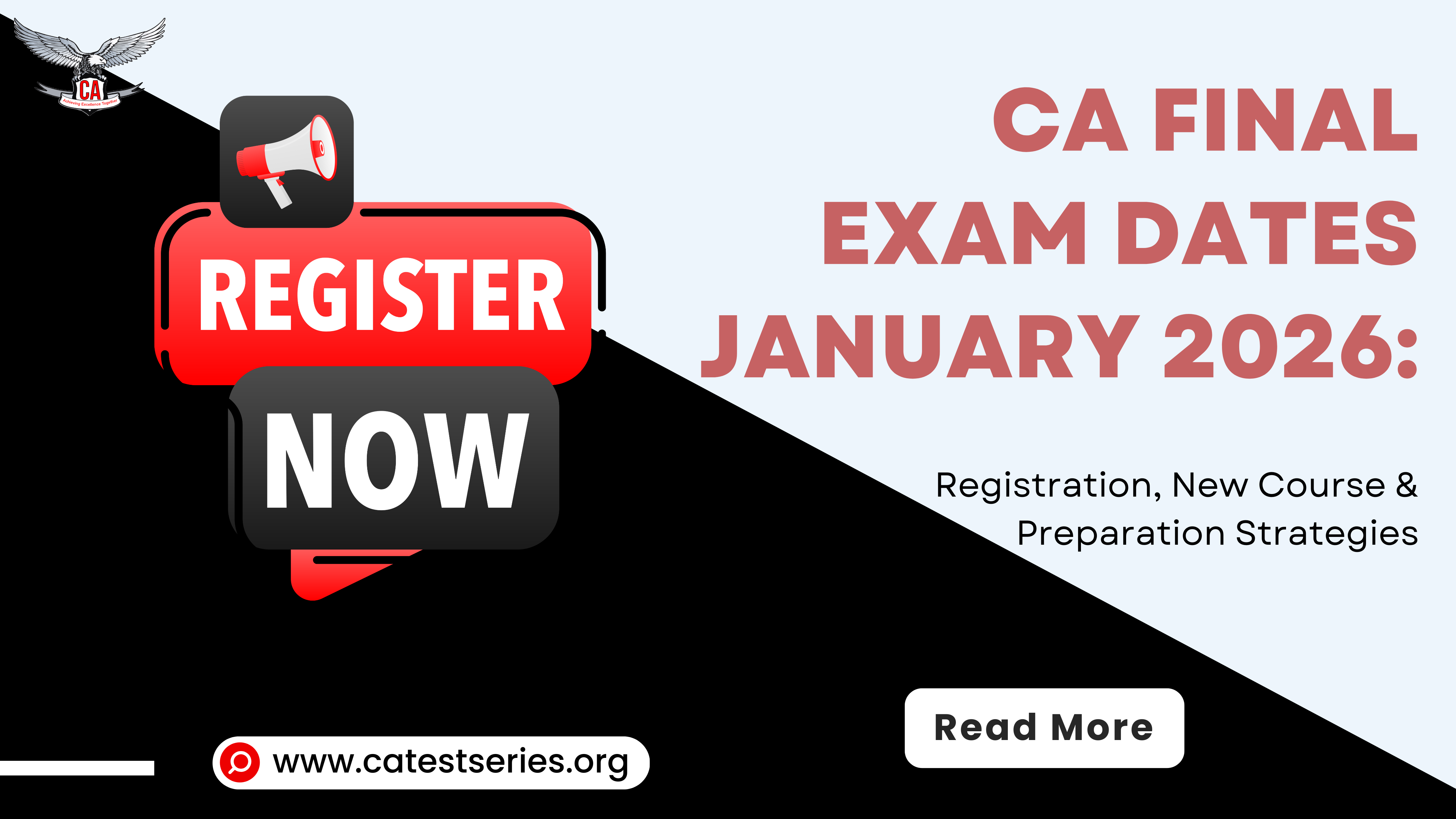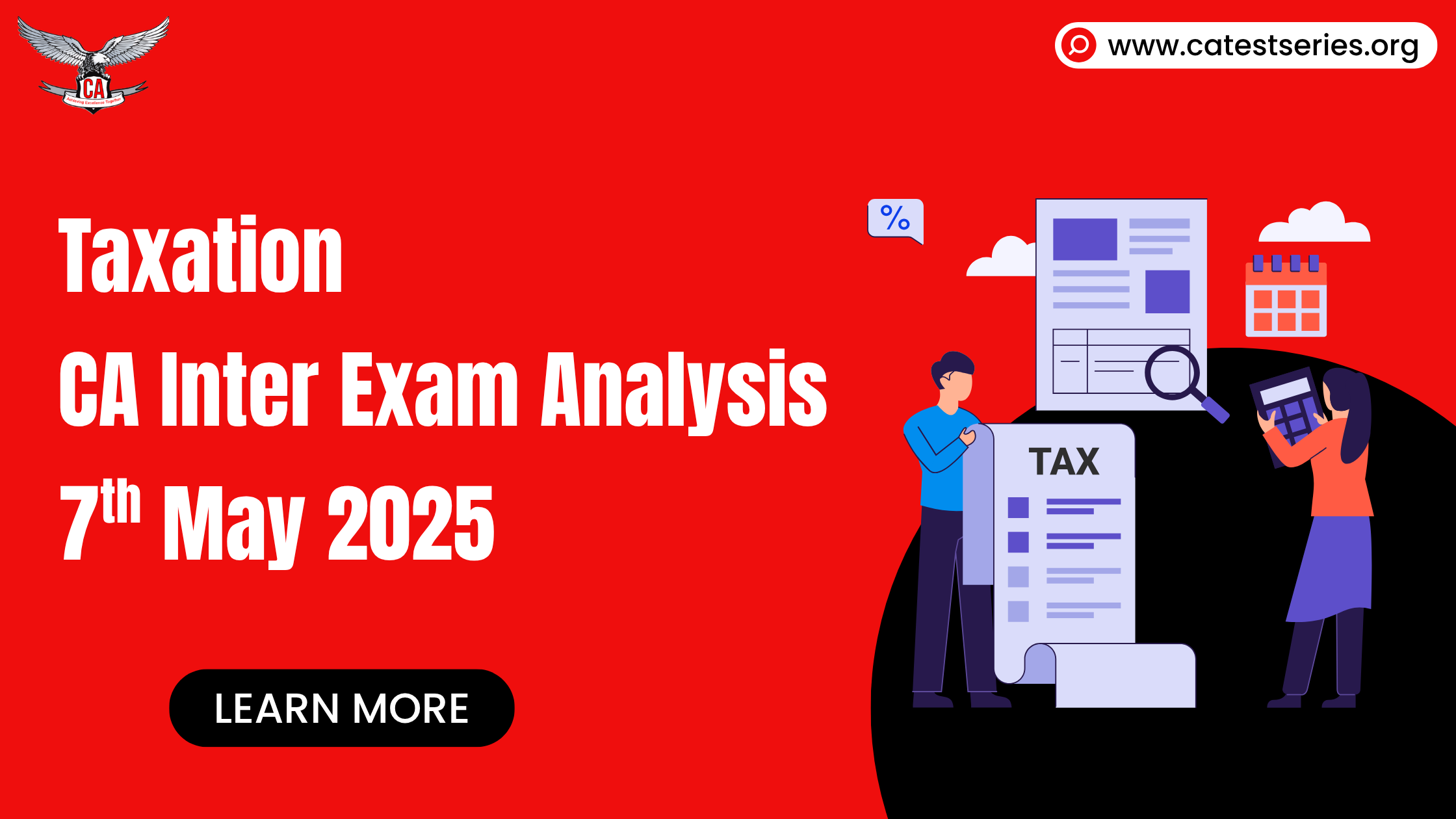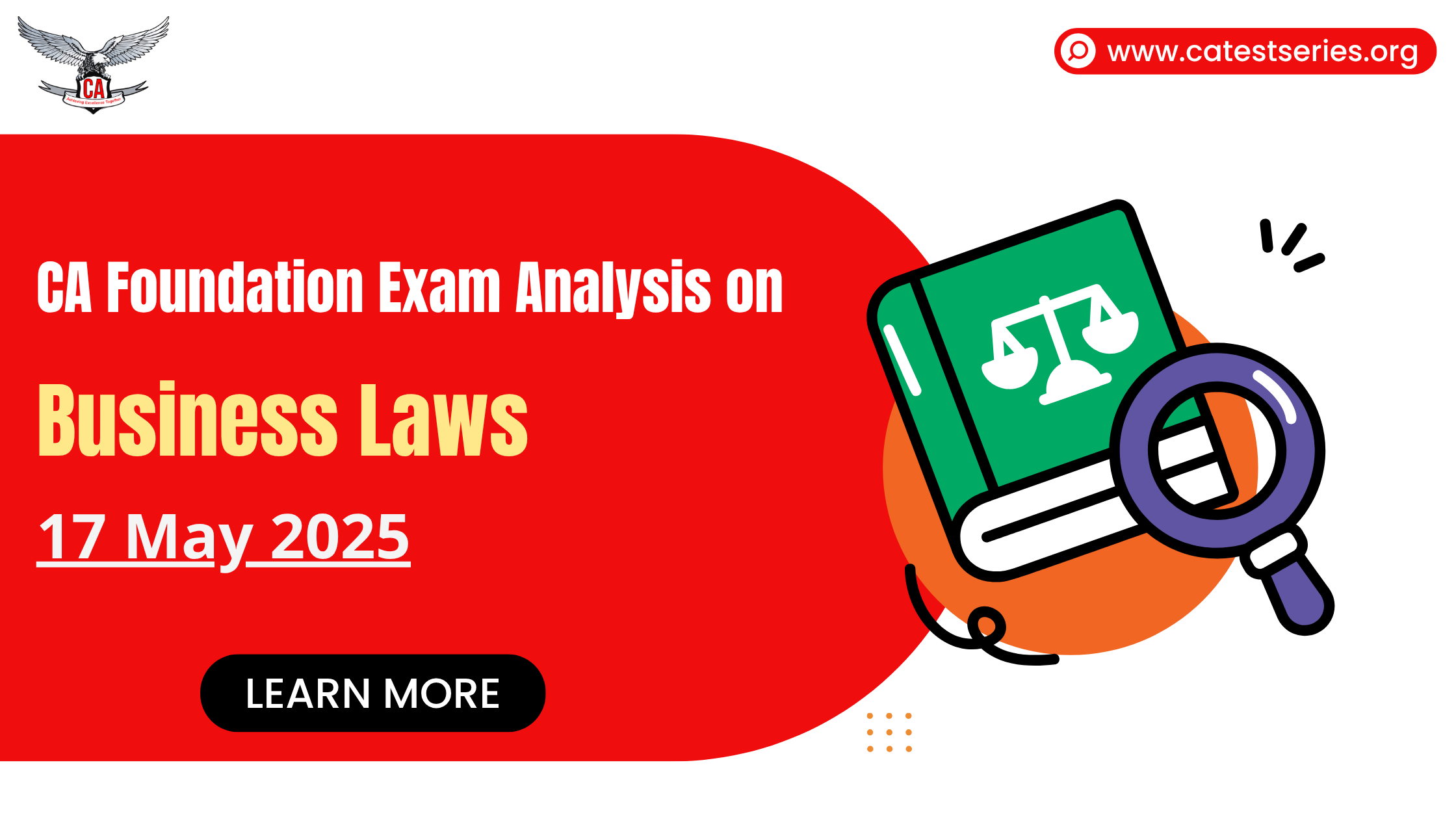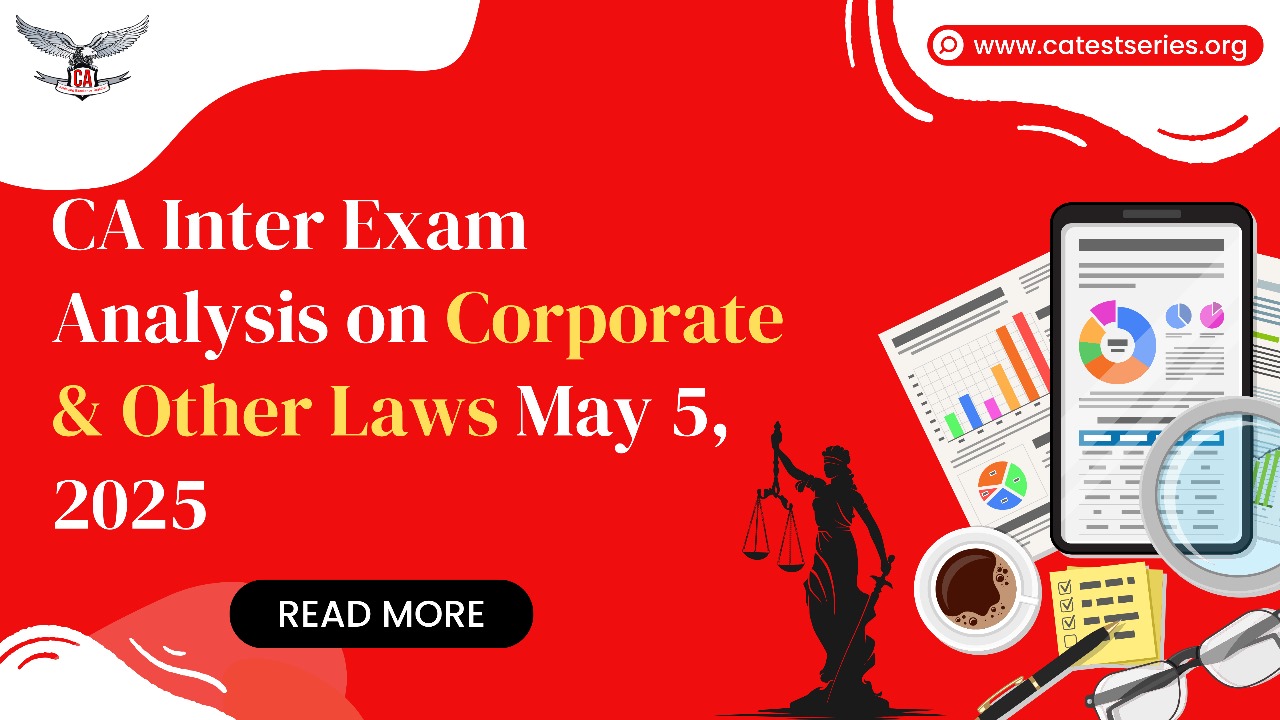Amendments in CMA Final Strategic Performance Managment ICMAI in PDF Format
MANAGEMENT FOR CMA FINAL
Strategic performance management plays a major role in the field of management accounting, including those taking the CMA (Certified Management Accountant) final tests. The changing business environment, therefore, always requires the updating of performance management frameworks to ensure they remain relevant. This article seeks to discuss the key changes to strategic performance management that candidates intending to sit for the final CMA examinations need to know.
1. PERFORMANCE MANAGEMENT SYSTEMS: AN EMERGING CONCEPT
Formerly, there were merely financial measures used in the performance management system (PMS). However, the new trend in PMS is to achieve a better balance between the financial and non-financial performance measures. The Balanced Scorecard, advanced by Kaplan and Norton, has steadily been hailed as a fundamental method that connects business processes with the vision and strategy of a firm. This shift is evidence of a continuing trend that acknowledges that organizational success comes from things other than financial measures, such as customer loyalty, employee morale and creativity and innovation. Hence, the CMA candidates should get acquainted with different kinds of performance management frameworks, in particular the Balanced Scorecard, and learn about their uses for striking a balance between financial and non-financial measures.
2. THE IMPACT OF TECHNOLOGY
Technological advancement has highly enhanced strategic performance management in the current world. Business intelligence, big data, and data mining help organizations uncover patterns and facts that are difficult to obtain from ordinary models. Managers have started using real-time information for performance tracking, and this can be corrected almost instantly. Such rapidity in decision-making is essential in the modern world business environment. The candidates preparing for CMA should be conversant with the part played by technology in performance management to incorporate tools that aid in performance measurement.
3. PRINCIPLES OF SUSTAINABILITY AND CSR
The actualization of CSR is receiving more and more attention. Organizations are required to carry out their social obligations and contribute to the community from which they receive funding. Consequently, it has become crucial for businesses to generate a profit while contributing to improving society. Some businesses use models like the Triple Bottom Line (TBL), which measures business performance based on people, planet, and profit. Sustainability can thus be incorporated into performance management systems to assist organizations in contributing to social objectives and still making a profit.
Thus, the CMA candidates should understand how sustainability measures can be incorporated into the conventional performance measurement system, and the need to provide reports on the sustainability measures.
4. SHIFT IN PERFORMANCE MANAGEMENT: THE AGILE WAY
Flexibility in terms of performance management is expected to be an issue of growing significance since many organizations are experiencing frequent shifts in business environments. Now, the companies are no longer concentrating on traditional once-a-year Assessment Center reviews of employee performance as we shift toward real-time ways of providing feedback to encourage flexibility. Such a strategy also means that there is the possibility for great adaptability to changes occurring in the market as well as a great encouragement of creativity and innovativeness. Long and short-term performance monitoring also increases the employees involvement in work due to the adopting environment that accompanies the handling of performance management. As a result, prospective managers ought to educate themselves on agile project management and how its achievements impact both individual and organizational performance.
5. EMPHASIS ON ORGANIZATION DEVELOPMENT AND STAFF PERFORMANCE
Organizations are paying greater attention to employee performance and engagement measures as they recognize that workers are critical assets for accomplishing strategic goals. Employee performance is being evaluated and improved through the use of tools like employee engagement surveys and 360-degree feedback.
Therefore, establishing cultural competency focused on performance so that employees can take responsibilities of individual and corporate responsibilities is essential. Aimed at remunerating employee efforts, firms are dedicating resources to supporting goal congruence through quality staff development programs. Thus, CMA candidates should also be armed with ways of approaching and, indeed, quantifying the concept of performance and engagement as part of a broad performance management approach to the workforce.
6. ROLE OF PREDICTIVE ANALYSIS
Predictive analytics has also emerged as one of the most potent tools needed for the efficient flow of business. Organizational forecasting has now become a strategic element in performance management. Hence, by studying previous performances, organizations use trend analysis to predict future performance and to make reliable and informed decisions.
These models can be beneficial for the purpose of constant risk and opportunity evaluation so that organizations do not operate on reflex instead of thought. This capability is important for survival in the dynamic and ever-evolving business environment. Applicants are, therefore, required to possess the above knowledge about the principles of predictive analysis and the applicability of the tools in improving strategic PM.
7. RISK MANAGEMENT INTEGRATION
It has become important for organizations to include risk management in the performance management systems as the uncertainties associated with business activities rise. A well-formed risk management system assists organizations in identifying risks that may hinder them from achieving their long-term or short-term objectives. The risk-based performance measures are a new set of measures that consider the probability and severity of certain risks. This integration helps to make assurance on performance review results separate from risks involved in such evaluation. CMA candidates should be acquainted with risk management fundamentals and their implementation in performance management systems to develop an overall strategy for the performance of each organization.
CONCLUSION
This means that the implementation of strategic performance management is a dynamic and continuously shifting process due to existing and emerging technologies affecting efficiencies in performance as well as changes in stakeholder expectations and demand for timely decision-making. It is significant for CMA candidates to grasp the knowledge of these amendments holistically, which will surely be beneficial for examination purposes as well as throughout a candidate career. Employers, therefore, have an advantage when they hire candidates knowledgeable about the current trends and tools applied to strategic performance management so that they will be useful in organizational assets that can enhance performance and lead to long-term organizational success. When studying for your CMA final, you should understand these and how they really fit into the larger context of management accounting.

